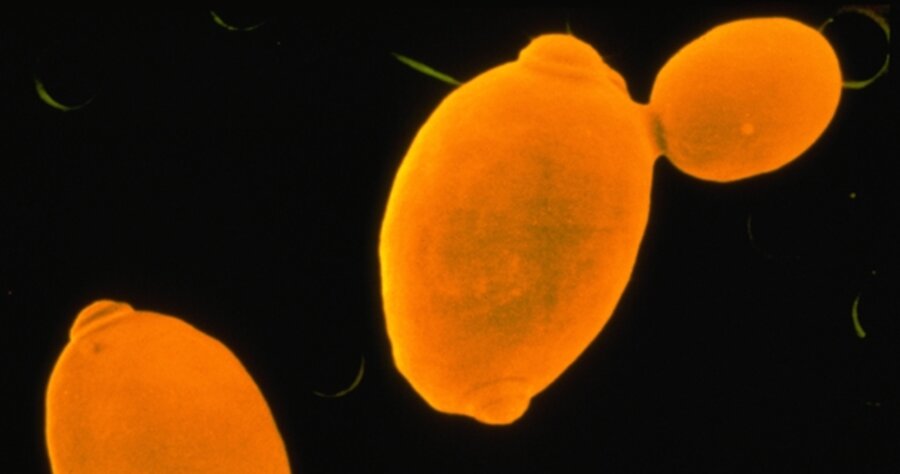Paleontology, without the fossils
Loading...
Fossils are intriguing. But sometimes a fresh look at other kinds of evidence gives new insight into our planet’s evolution. You can call it “alternative paleontology.”
Just such a restudy of mineral formation now shows that life is responsible for much of Earth’s mineral inventory. It’s a kind of coevolution of a lifeless planetary constituent and organic life itself. Or consider the mistakes living cells sometimes make in folding proteins: Misfolded proteins are often harmful to those cells. Yet it now looks as though they can benefit yeast cells by speeding up the cells’ evolutionary adaptation to harmful changes in the environment.
Robert Hazen and several colleagues at the Carnegie Institution of Washington made an extensive review of the physical, chemical, and biological processes that have produced Earth’s minerals. In announcing the results two weeks ago, Dr. Hazen explained that this “different way of looking at minerals” shows that “both the variety and relative abundance of minerals have changed dramatically over more than 4.5 billion years of Earth’s history.”
The primordial Earth inherited the chemical elements and about a dozen minerals from stardust. Purely geological processes used that inventory to build many other minerals. However, Hazen noted that “of the approximately 4,300 known mineral species on Earth, perhaps two-thirds of them are biologically mediated.” Metal ores, which are oxidized products of weathering, are prominent among them. Thus the action of photosynthesizing algae in producing an oxygen-rich atmosphere was key to this ore formation. Hazen said that “for at least 2.5 billion years, and possibly since the emergence of life, Earth’s mineralogy has evolved in parallel with biology.”
At the Whitehead Institute for Biomedical Research in Cambridge, Mass., Susan Lindquist and colleagues are using a “biological mistake” to elucidate the evolution of yeast. The activity of a protein in a living cell depends critically on the protein molecule’s exact shape. Folding it the wrong way can be disastrous. Yet about one-quarter of the time, such misfolding in yeast seems to be helpful. This week, the researchers explain in PloS Biology and in a Whitehead announcement why this may be so.
Dr. Lindquist notes that sometimes the yeast with misshapen protein “can grow on energy sources it couldn’t grow on before or withstand antibiotics it couldn’t withstand before.” This now seems more than a coincidence.
Systematically studying baker’s yeast’s entire genome revealed many genes related to the yeast’s response to stress. Matching these with the yeast’s ability to produce misfolded proteins showed that the more stressed a yeast cell is, the more likely it is to go into a state that produces such proteins. This can allow relevant yeast-cell genes to express themselves in ways that help the yeast adapt to the new stress.
So-called “genetic footprints” can also be informative. Bastien Boussau at the University of Lyon in France and colleagues explain in this week’s Nature how the common ancestor of all earthly life has left such a trail in extant protein and DNA sequences. Matching such data with a computer model on evolutionary adaptation, they have reconstructed how our microbial common ancestor adjusted to changing temperatures billions of years ago.
Now that’s paleontology without fossils.





